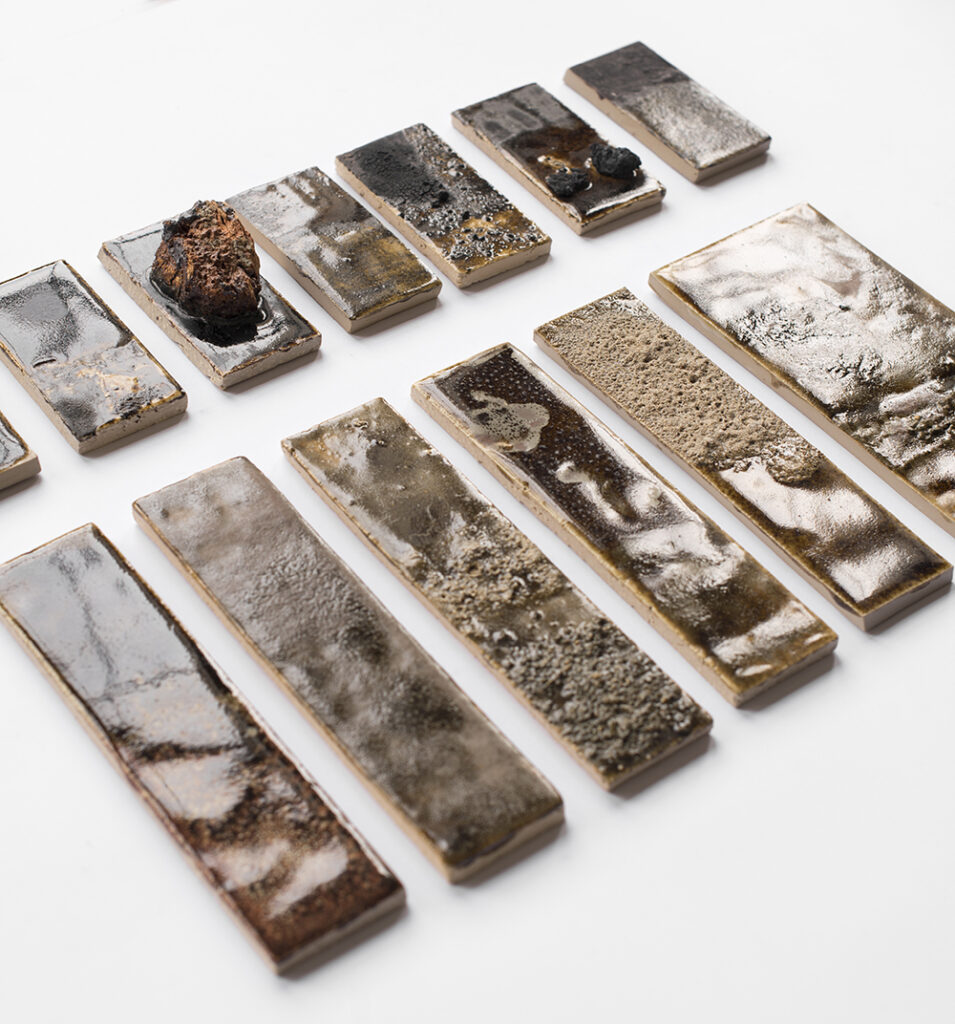
Untangling stories in earth layers
2021
FR: Ce projet porte sur la revalorisation in-situ des déchets industriels se trouvant dans le parc Westduinpark, aux Pays-Bas. Utilisés dans les années 1950 comme remblais, mâchefers, scories d’acier et morceaux de briques se sont répandus dans les dunes. Travaillant en contact avec un géologue et un manager du parc, j’ai recensé et catégorisé ces rebus en créant un guide pour une géologie industrielle. J’ai ensuite développé des gammes d’émaux pour céramique, re-valorisant ces déchets comme pigments. Ces matériaux anthropiques font partie de l’histoire du parc. La création d’éléments d’infrastructure pour le parc, émaillés avec ces déchets, permet de témoigner de l’histoire industrielle de cette réserve naturelle.
EN: Many landscapes are haunted by industrial histories that become part of geology, and that we recognize as ‘nature.’ This project studies the area of Zuiderstrand and Westduinpark, in Zuidholland. Slags, by-products of the industry, waste and debris of the war are silent ‘hybrids,’ that have become part of the landscape. By giving a voice to these rejected monsters, multiple stories intersect, about the history of the Netherlands, the construction of the park and the beach. With the help of a scientist and a volunteer of the park, I created a geological guide, categorizing these specimens, as well as a tour providing another way of looking at the site. I worked on reusing these rejected industrial waste as a pigment for glazing a set of three landmarks, telling different stories about the trajectories of this haunted landscape.
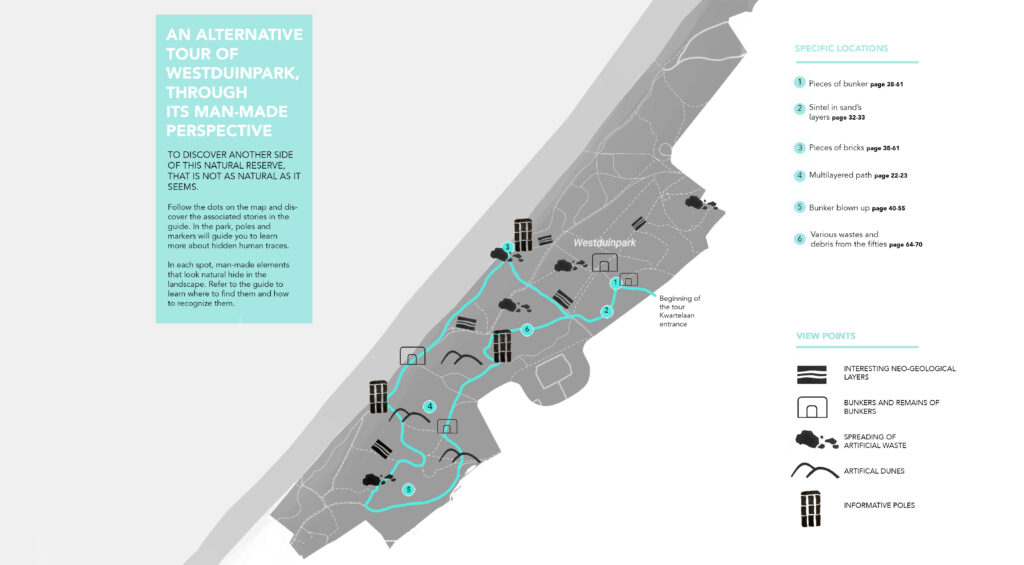
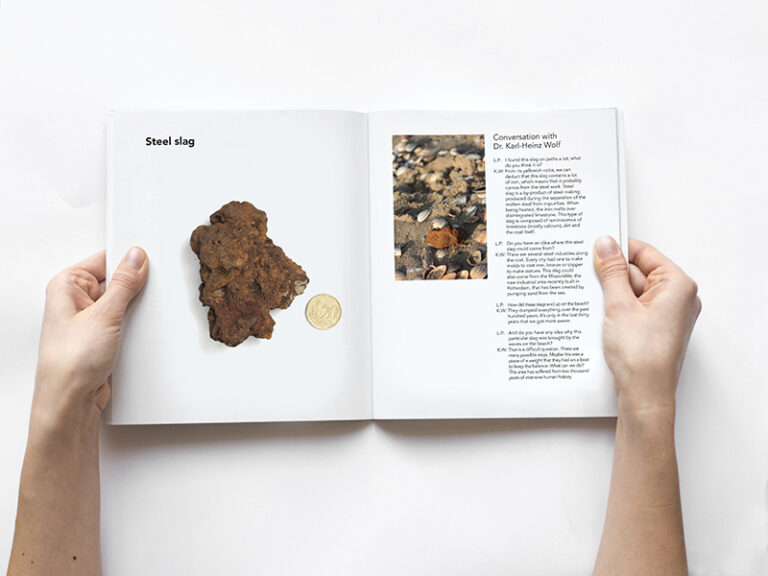
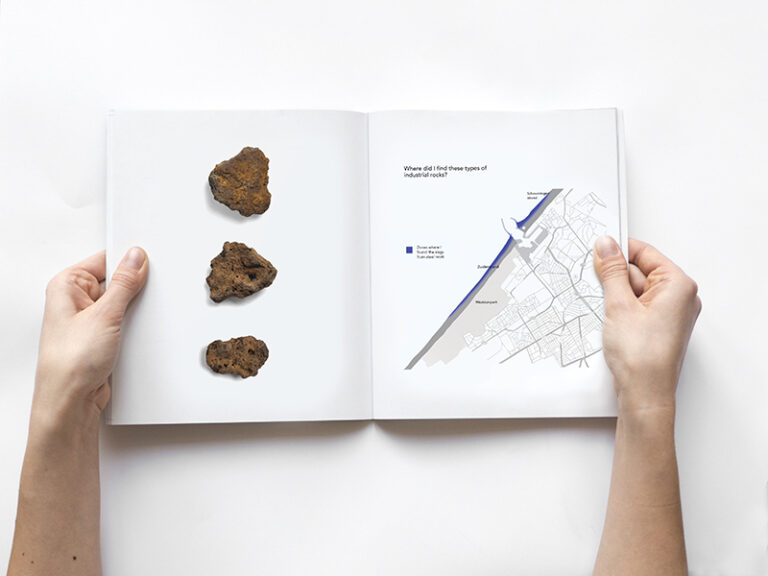
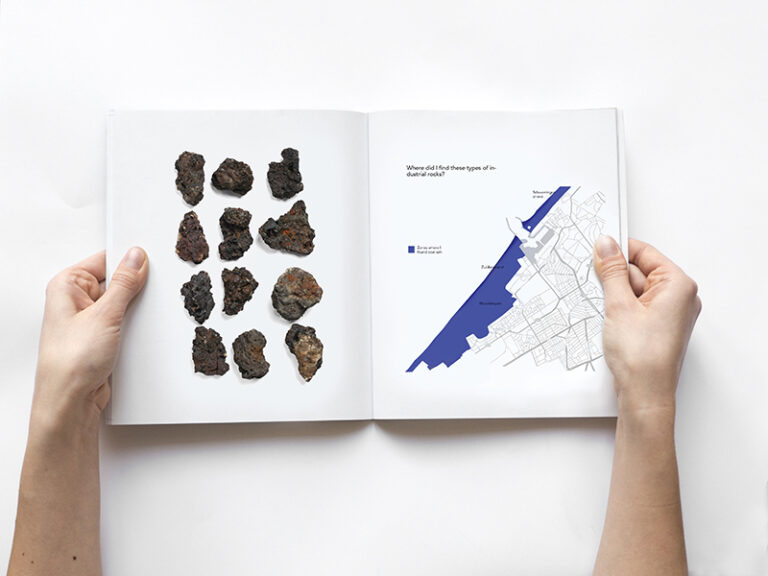

Mâchefer – Coal ash
FR: Une série de trois ‘colonnes géologiques’ dans le paysage a été conçue. Ces points de repère sont placés à des lieux précis du parc où on observe une forte présence d’un matériau anthropique et sont émaillés avec ces matériaux. Cette colonne émaillée avec du mâchefer montre à l’extérieur ce qui se passe sous le sol, les différentes couches d’une géologie artificielle.
EN: This pole has been glazed with the materials from the ground (coal ash) and represents outside what is happening inside. It shows the various layers of the paths that have been stacked onto one another.

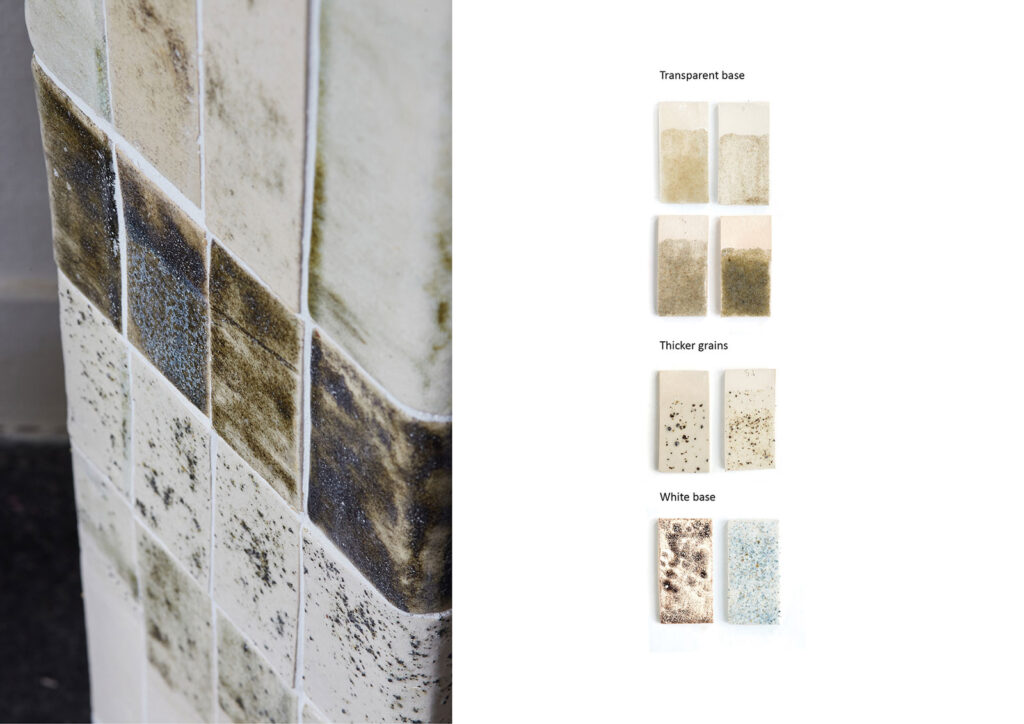

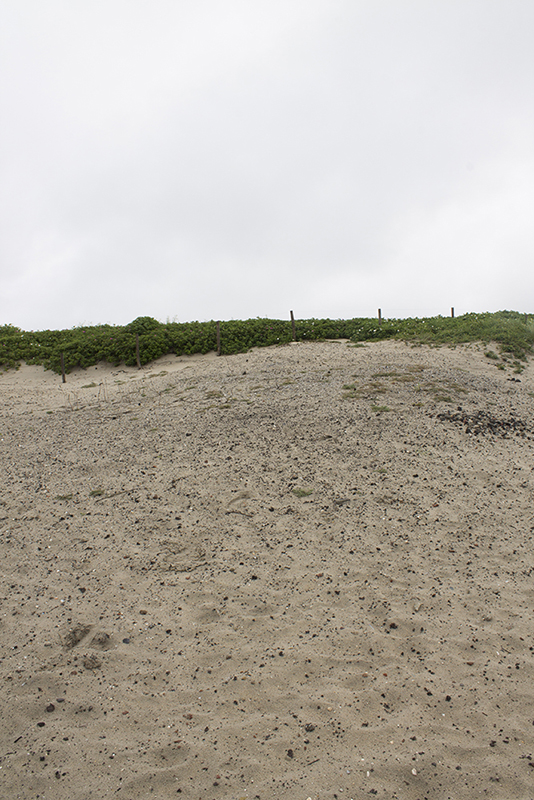
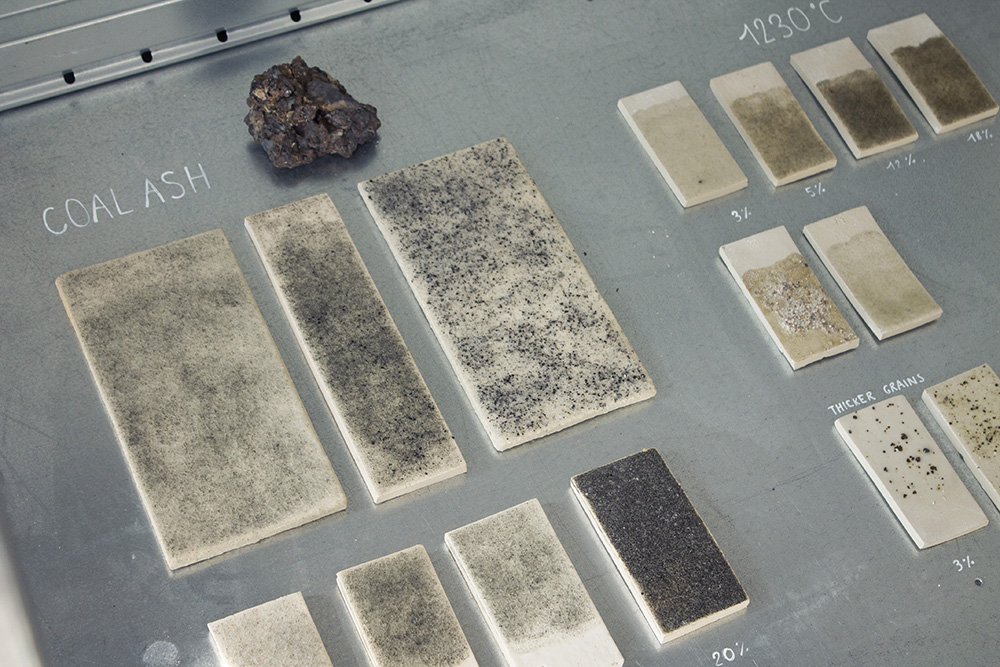
Briques – bricks
FR: Cette colonne est émaillée avec des briques concassées. Elle est placée sur une dune parsemée de morceaux de briques et de béton, résidus de bunkers construits pendant la Seconde Guerre mondiale.
En: Walking in the dunes we still see remnants of bunkers in the landscape. Pieces of concrete, bricks and rocks are scattered across the sand. This landmark is glazed using bricks as pigments. It is placed on an area where pieces of bricks become part of the geological landscape.
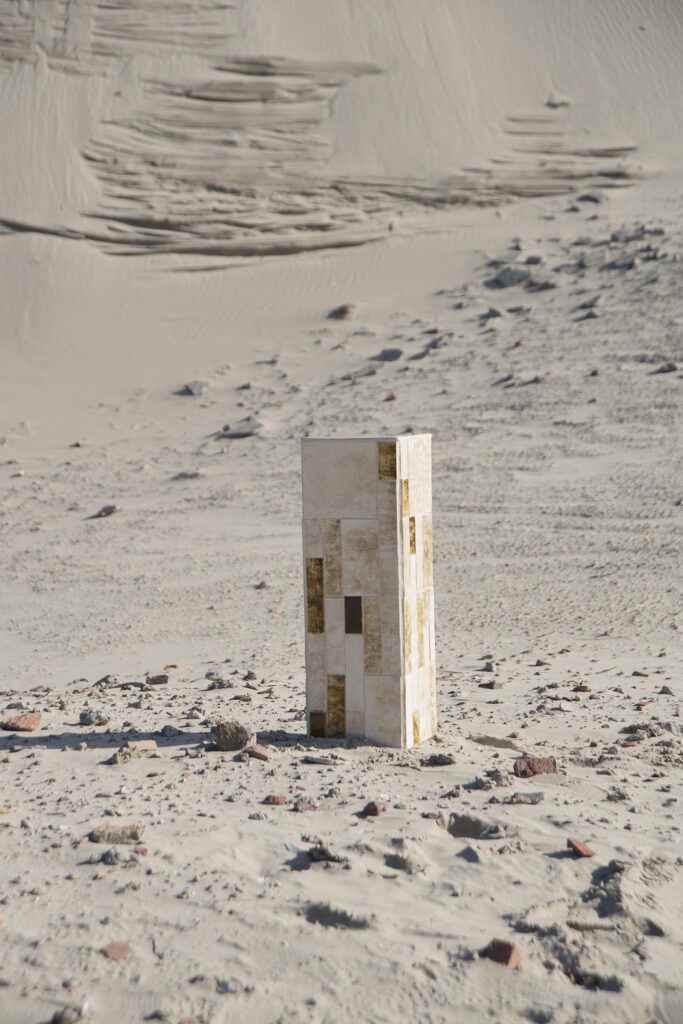

Scories – steel slag
FR: Des scories d’acier se trouvent sur la plage et dans le parc. Elles ont été rejetées par des usines présentes le long de la côte. Cette colonne se situe sur une dune où de nombreux déchets industriels sont accumulés. Se mêlant au paysage, ces déchets ressemblent à des roches et leur présence n’est pas remarquée des promeneurs.
EN: This landmark is located on a dune on which many slags can be found. They look like natural rocks, and remain unnoticed by passers-by. Steel slag found on the dune is used as a pigment to glaze this pole.


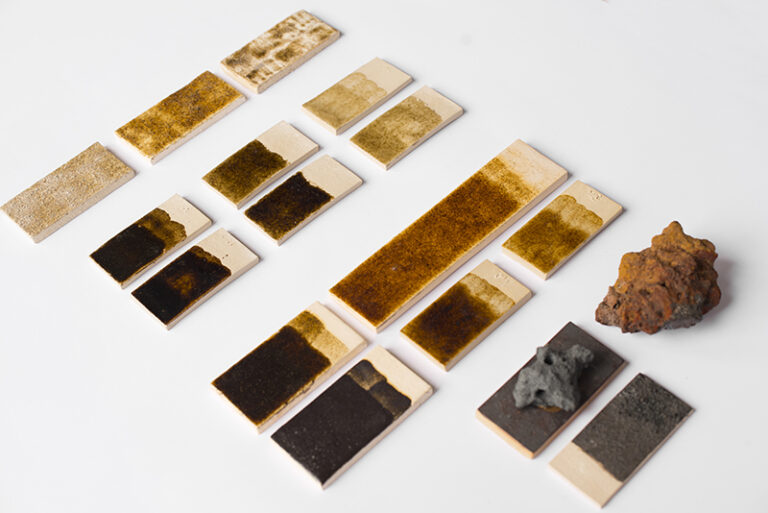
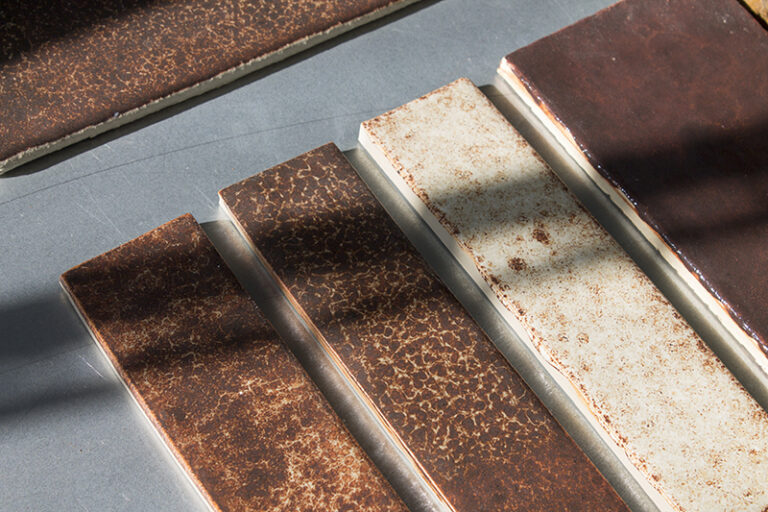

Expérimentations – experiments
FR: Recherches d’émaux avec divers matériaux trouvés sur la plage (roches, coquillages, scories) dans le but d’obtenir des textures.
EN: Various materials found on the beach such as sand, shells, pieces of rocks, are used in the glazing to create textures.
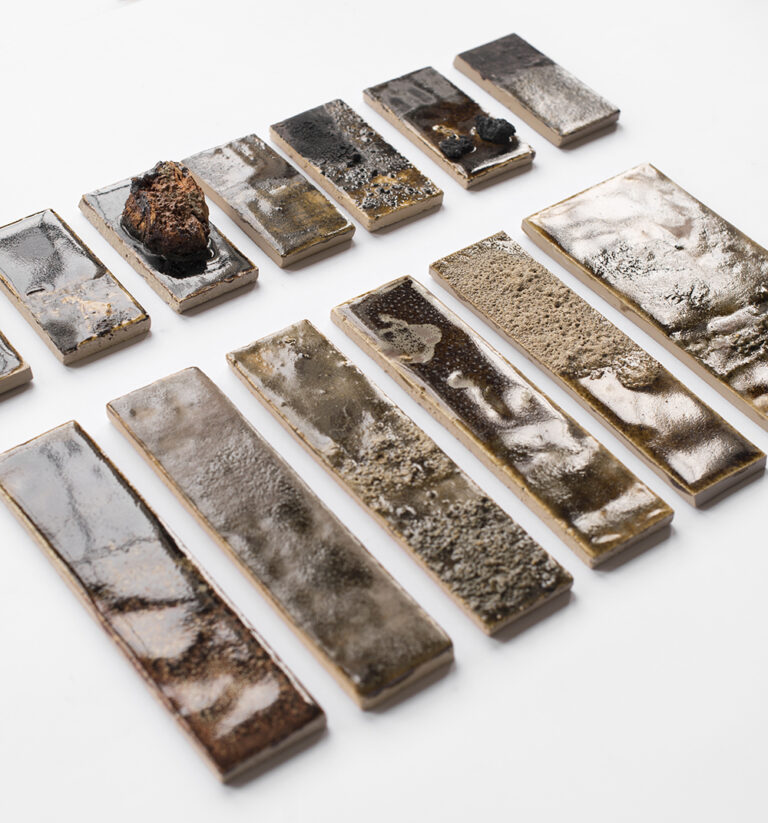
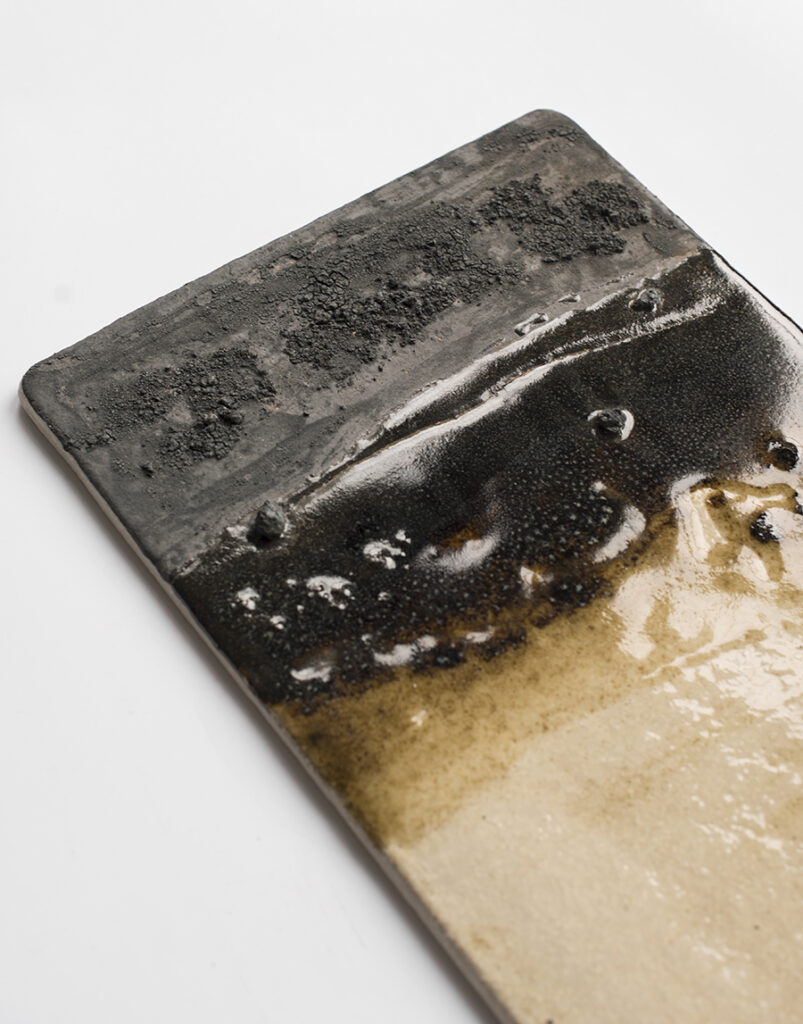
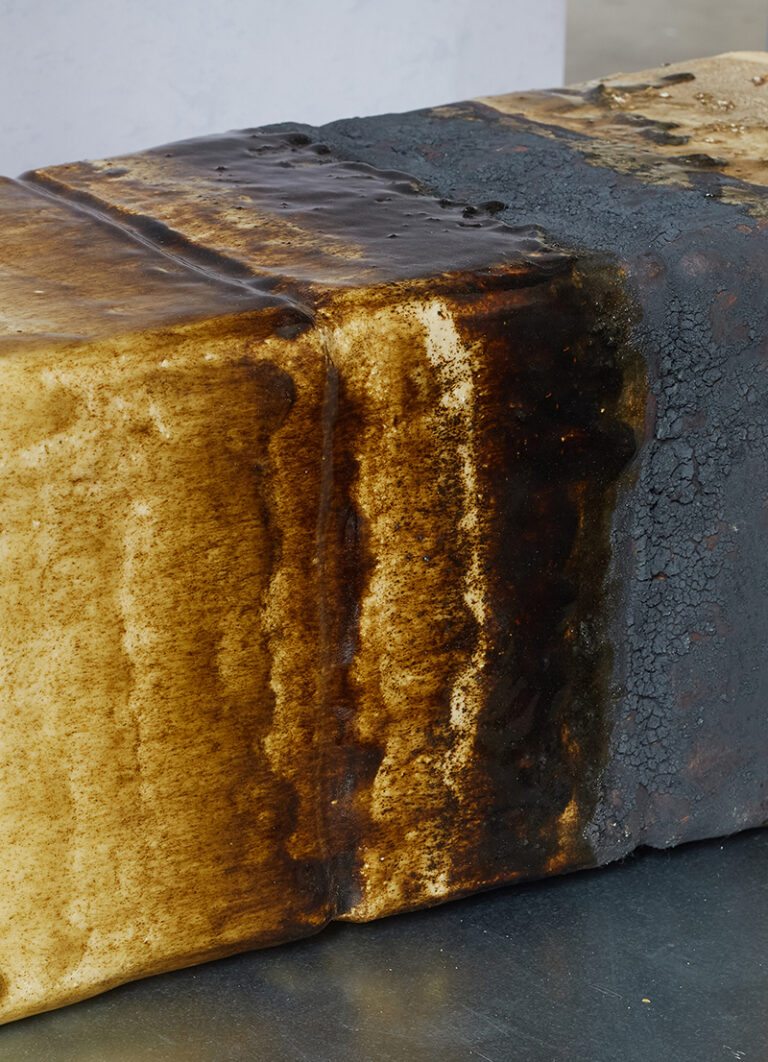
Untangling stories in earth layers
Projet de diplôme, 2021
FR: Ce projet porte sur la revalorisation in-situ des déchets industriels se trouvant dans le parc Westduinpark, aux Pays-Bas. Utilisés dans les années 1950 comme remblais, mâchefers, scories d’acier et morceaux de briques se sont répandus dans les dunes. Travaillant en contact avec un géologue et un manager du parc, j’ai recensé et catégorisé ces rebus en créant un guide pour une géologie industrielle. J’ai ensuite développé des gammes d’émaux pour céramique, re-valorisant ces déchets comme pigments. Ces matériaux anthropiques font partie de l’histoire du parc. La création d’éléments d’infrastructure pour le parc, émaillés avec ces déchets, permet de témoigner de l’histoire industrielle de cette réserve naturelle.
EN: Many landscapes are haunted by industrial histories that become part of geology, and that we recognize as ‘nature.’ This project studies the area of Zuiderstrand and Westduinpark, in Zuidholland. Slags, by-products of the industry, waste and debris of the war are silent ‘hybrids,’ that have become part of the landscape. By giving a voice to these rejected monsters, multiple stories intersect, about the history of the Netherlands, the construction of the park and the beach. With the help of a scientist and a volunteer of the park, I created a geological guide, categorizing these specimens, as well as a tour providing another way of looking at the site. I worked on reusing these rejected industrial waste as a pigment for glazing a set of three landmarks, telling different stories about the trajectories of this haunted landscape.
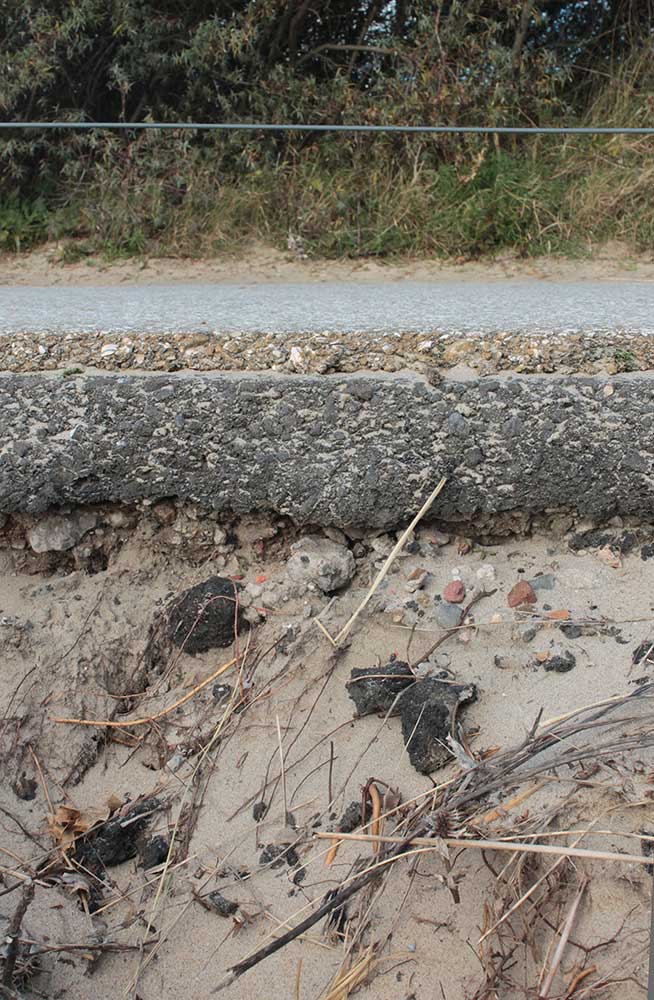

Mâchefer – Coal ash
FR: Une série de trois ‘points de repère’ dans le paysage a été conçue. Chaque colonne est placée à un lieu précis du parc où on observe une forte présence d’un matériau anthropique et est émaillée avec ce même matériau.
EN: This pole has been glazed with the materials from the ground (coal ash) and represents outside what is happening inside. It shows the various layers of the paths that have been stacked onto one another.

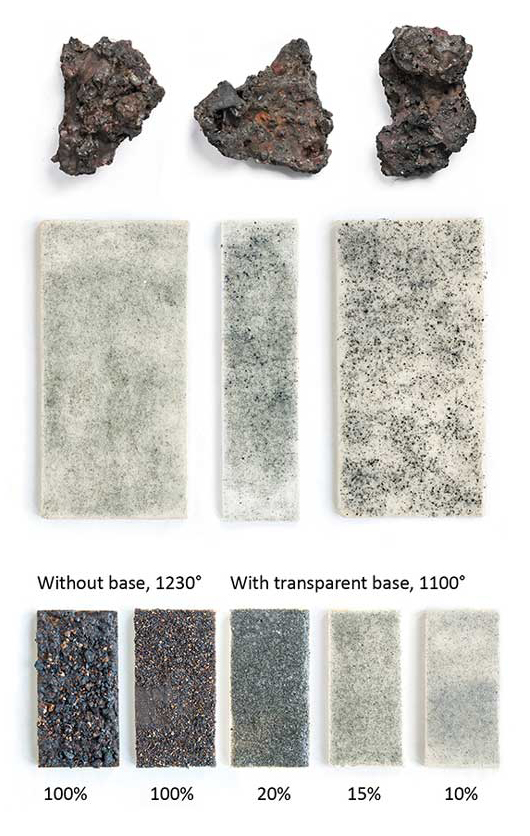
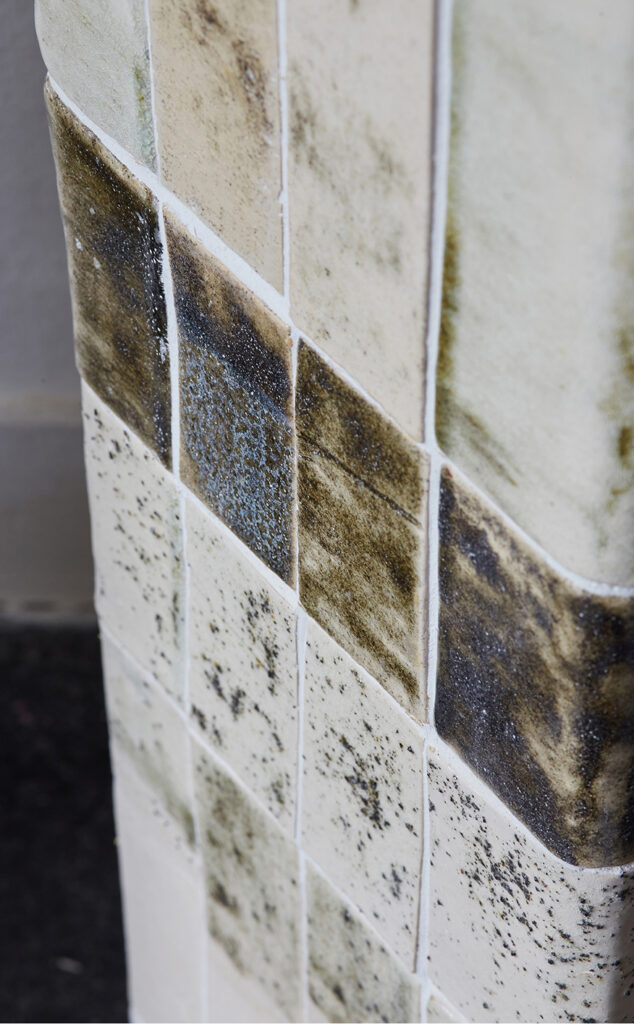
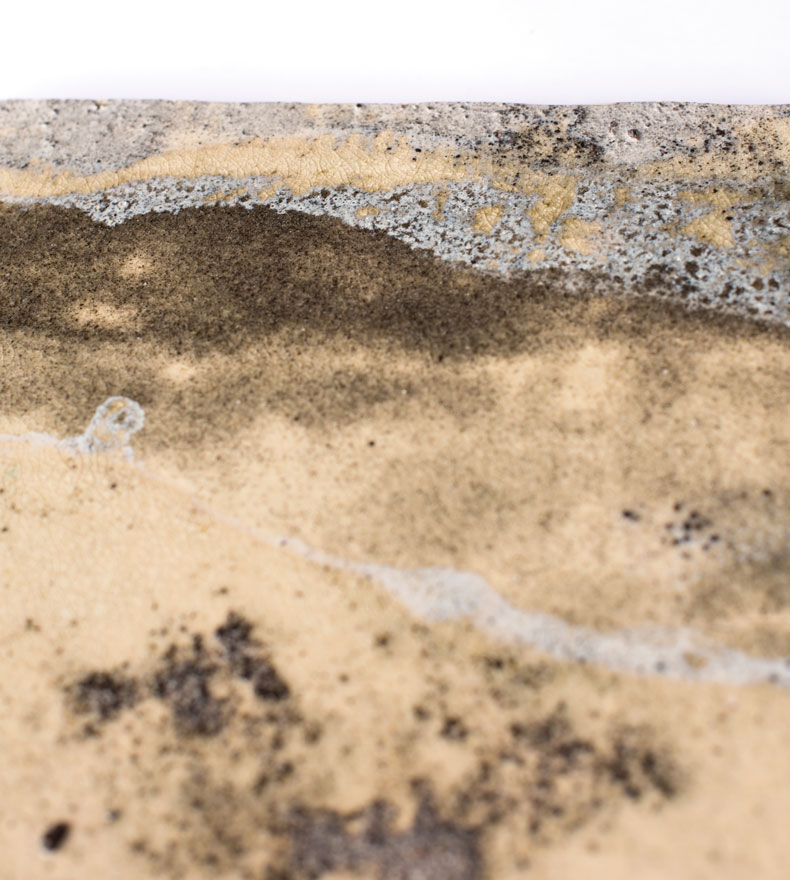
Briques – bricks
FR: Cette colonne est émaillée avec des briques concassées. Elle est placée sur une dune parsemée de morceaux de briques et de béton, résidus de bunkers construits pendant la Seconde Guerre mondiale.
En: Walking in the dunes we still see remnants of bunkers in the landscape. Pieces of concrete, bricks and rocks are scattered across the sand. This landmark is glazed using bricks as pigments.

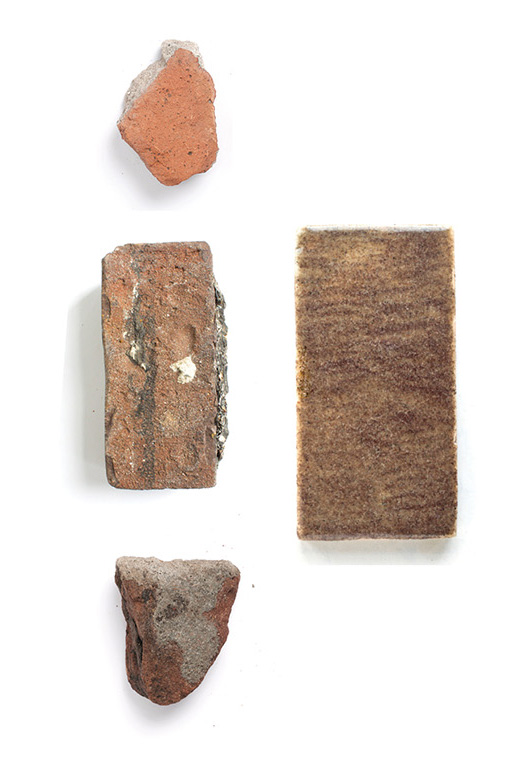
Scories – steel slag
FR: Des scories d’acier se trouvent sur la plage et dans le parc. Elles ont été rejetées par des usines présentes le long de la côte. Cette colonne se situe sur une dune où de nombreux déchets industriels sont accumulés. Se mêlant au paysage, ces déchets ressemblent à des roches et leur présence n’est pas remarquée des promeneurs.
EN: This landmark is located on a dune on which many slags can be found. They look like natural rocks, and remain unnoticed by passers-by. Steel slag found on the dune is used as a pigment to glaze this pole.
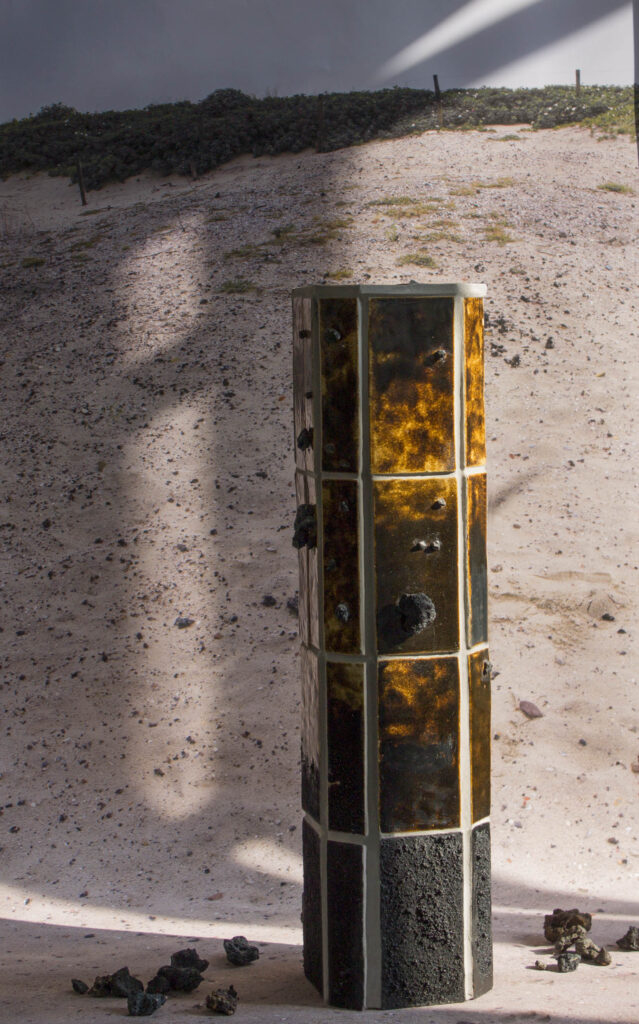

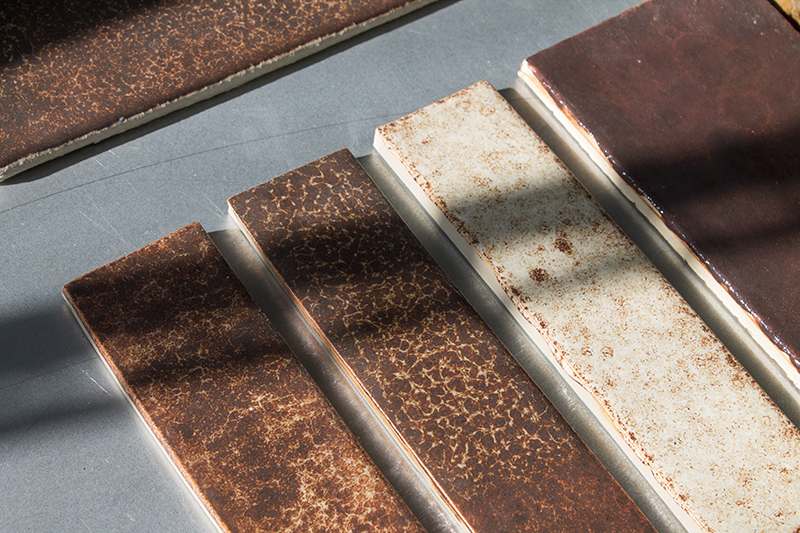
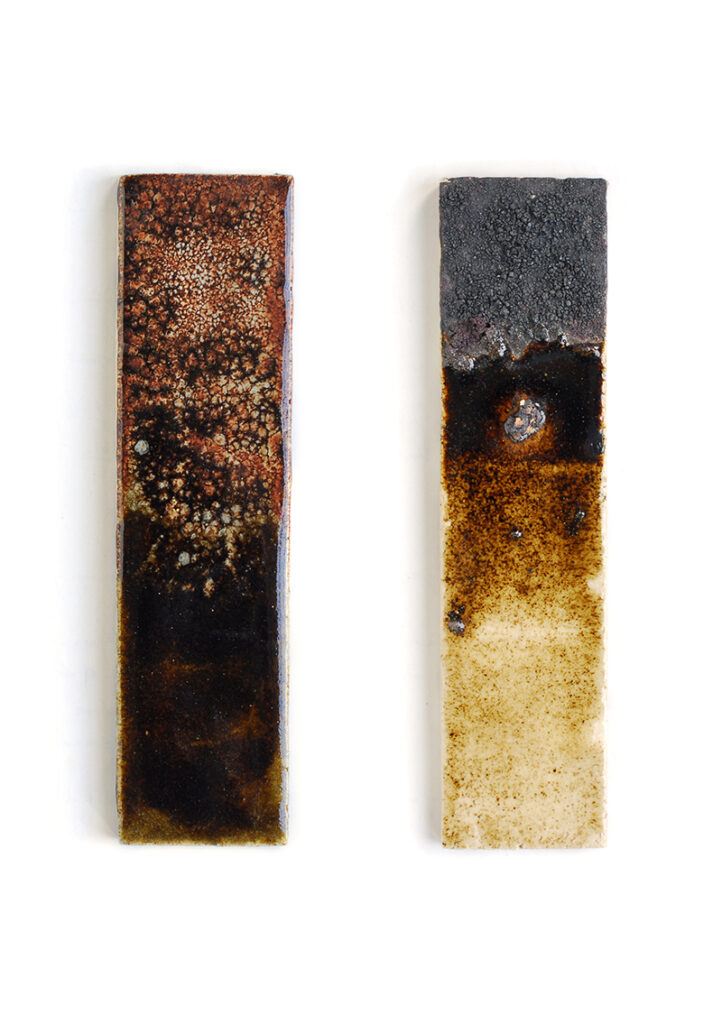
4 Experiments with textures
Various materials found on the beach such as sand, shells and pieces of rocks are used in the glazing to create textures.
